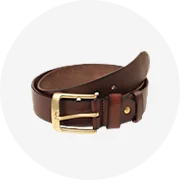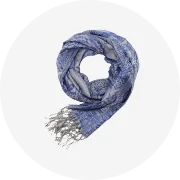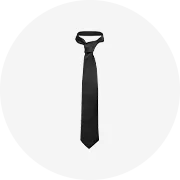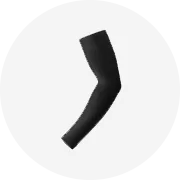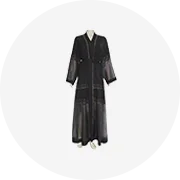Phổ biến trong ngành của bạn






Kara Manda chất lượng hàng đầu công suất lớn ngân hàng điện sạc nhanh ngân hàng điện cầm tay 4680 pin di động ngân hàng điện cho Tesla
279.746 ₫ - 814.546 ₫
Đơn hàng tối thiểu: 2 Cái



Đa-chức năng quạt cầm tay với ngân hàng điện Battery Powered mini cầm tay Fan Wearable thiết bị

133.637 ₫ - 149.928 ₫
Đơn hàng tối thiểu: 1000 Cái







Kara Manda Chất lượng cao 4680 Xe đo ngân hàng điện cho Tesla công suất lớn 25000mAh ngân hàng điện sạc nhanh ngân hàng điện cầm tay
177.928 ₫ - 661.818 ₫
Đơn hàng tối thiểu: 2 Cái



Kính Cường Lực 5D Trong Suốt Cầm Tay Ánh Sáng Cao 5000Mah 10000MAh Sạc Dự Phòng Không Dây Từ Tính 15W 22.5W
407.019 ₫ - 422.291 ₫
Đơn hàng tối thiểu: 100 Cái







3 trong 1 điện thoại và đồng hồ sạc không dây từ ngân hàng điện 10000mAh khẩn cấp ngân hàng điện sạc không dây Sẵn sàng vận chuyển
Sẵn sàng vận chuyển
 Sẵn sàng vận chuyển
Sẵn sàng vận chuyển196.000 ₫ - 208.728 ₫
Đơn hàng tối thiểu: 10 Cái
Vận chuyển mỗi chiếc: 170.291 ₫







Omax USB Powerbank Sạc 1500Mah Xách Tay Wearable Bracelet Ngân Hàng Điện
280.000 ₫ - 381.819 ₫
Đơn hàng tối thiểu: 30 Cái






Cầm Tay Mini Fan 3 Trong 1 Tay Fan Xách Tay USB Có Thể Sạc Lại Túi Nhỏ Pin Hoạt Động Xách Tay & Mặc Fan Ngân Hàng Điện

76.364 ₫ - 87.819 ₫
Đơn hàng tối thiểu: 2 Cái






Phổ Biến Ngoài Trời Du Lịch Ngân Hàng Điện 9000MAh Eo Clip Fan Tốc Độ Cao Mặc Fan Turbo Máy Bay Phản Lực Không Cánh LED Hiển Thị Clip Fan

234.182 ₫ - 290.182 ₫
Đơn hàng tối thiểu: 2 Cái






Đa Chức Năng Cầm Tay Fan Với Ngân Hàng Điện Gấp Xách Tay Mặc Cổ Fan Không Khí Lạnh Có Thu Phí Mini Fan

214.582 ₫ - 234.946 ₫
Đơn hàng tối thiểu: 2 Cái






Mới nhất xách tay Wearable gấp Fan USB ngân hàng điện cầm tay Fan có thể gập lại cổ treo Fan USB ngân hàng điện
120.910 ₫ - 148.910 ₫
Đơn hàng tối thiểu: 100 Cái






Không thấm nước USB pin LCD hiển thị ngân hàng điện DC 19V 21V 25V quạt làm mát vest mặc AC may mặc bên ngoài pin 20000mAh
305.455 ₫ - 343.637 ₫
Đơn hàng tối thiểu: 4 Cái






2024 Sản phẩm mới mặc pd18w tốt nhất Sạc kép USB 20000mAh năng lượng mặt trời ngân hàng điện tốt nhất năng lượng mặt trời sạc điện ngân hàng với đèn pin
280.000 ₫ - 402.182 ₫
Đơn hàng tối thiểu: 2 Cái
Các tìm kiếm liên quan:
danh sách ngân hàng điệnnăng lực của ngân hàng điệnngân hàng điện trung quốc tốt nhấtngân hàng điện độc đáo mớitrung quốc xuất khẩu ngân hàng điệnpoweradd ngân hàng điệnsản xuất tại trung quốc ngân hàng điệnchức năng của ngân hàng điệnthương hiệu tốt của ngân hàng điệnsản xuất tại đức ngân hàng điệnnhà máy cung cấp ngân hàng điệnchuyên nghiệp không thấm nước ngân hàng điệnsản xuất tại hàn quốc ngân hàng điệntrung quốc hàng hóa bán buôn ngân hàng điệnneo ngân hàng điện






Wearable Và Không Thấm Nước Kép Usb 10000MAh 20000MAh Năng Lượng Mặt Trời Ngân Hàng Điện Tốt Nhất Năng Lượng Mặt Trời Charger Ngân Hàng Điện Với Đèn Pin
Sẵn sàng vận chuyển
228.837 ₫ - 235.710 ₫
Đơn hàng tối thiểu: 2 Cái
Vận chuyển mỗi chiếc: 518.255 ₫






Pin Sạc Dự Phòng Di Động Đeo Được Mới Nhất 2022 MAh Hộp Sạc Pin Mini Cho Airpods Pro 200
305.455 ₫ - 649.091 ₫
Đơn hàng tối thiểu: 3 Bộ






Mới Nhất Đến Xách Tay Eo Clip Mini Fan Mặc Cổ Fan Với Đèn Pin Sạc Khẩn Cấp Ngân Hàng Điện Ngoài Trời Sử Dụng

167.491 ₫ - 195.491 ₫
Đơn hàng tối thiểu: 10 Cái






Trí Tuệ-công nghệ RoHS ngân hàng điện 5000mAh Đeo vòng đeo tay điện tường ánh sáng ngoài trời cảm biến chuyển động sạc không dây điện thoại di động
93.928 ₫ - 147.891 ₫
Đơn hàng tối thiểu: 10 Cái






Hàng Mới Về Quạt Mini Ngoài Trời Đèn Pin Quạt Kẹp Eo Di Động Quạt Đeo Cổ Có Thể Sạc Lại Với Sạc Dự Phòng Khẩn Cấp
179.710 ₫ - 184.291 ₫
Đơn hàng tối thiểu: 60 Cái






Quạt Không Dây Cầm Tay Đa Năng Kẹp Đeo Eo Rảnh Tay Trên Quạt Sạc Dự Phòng Bỏ Túi Tích Hợp Pin Lithium 10000MAh
369.091 ₫ - 381.819 ₫
Đơn hàng tối thiểu: 50 Cái






Quạt thông gió có thể gập lại USB ngân hàng điện cầm tay di động có thể đeo điện thoại quạt gấp Quạt làm mát không khí bằng nhựa Quạt xe đẩy em bé
140.000 ₫ - 152.728 ₫
Đơn hàng tối thiểu: 40 Cái
Vận chuyển mỗi chiếc: 31.819 ₫






Cầm Tay Mini Xách Tay USB Có Thể Sạc Lại Nhỏ Làm Mát Di Động Mặc Tay Cổ Fan Với Ngân Hàng Điện
81.710 ₫ - 87.310 ₫
Đơn hàng tối thiểu: 10 Cái






Hot bán 2023 cung cấp điện Slim Hand Crank USB Charger Trọng lượng nhẹ đa Torch ánh sáng ngân hàng điện 2600mAh được bán nhiều nhất
89.091 ₫ - 96.728 ₫
Đơn hàng tối thiểu: 3000 Cái






Epsilon Di Động Ngoài Trời Mini Eo Treo Clip 3 Quạt Điều Chỉnh Tốc Độ 4000Mah Quạt Sạc Usb Với Pin Sạc Dự Phòng
Sẵn sàng vận chuyển
179.200 ₫ - 234.437 ₫
Đơn hàng tối thiểu: 2 Cái
Vận chuyển mỗi chiếc: 279.237 ₫






3000MAh Thông Gió Có Thể Gập Lại USB Ngân Hàng Điện Cầm Tay Di Động Mặc Điện Thoại Chủ Gấp Fan Hâm Mộ Nhỏ Fan Hâm Mộ Nhỏ
122.946 ₫ - 143.819 ₫
Đơn hàng tối thiểu: 10 Cái






Dễ Dàng Mang Năng Lượng Mặt Trời Sạc Bảng Quạt Điện Với Ngân Hàng Điện Chức Năng Xách Tay Và Năng Lượng Mặt Trời Có Thể Sạc Lại Fan
Sẵn sàng vận chuyển
1.117.455 ₫ - 1.221.818 ₫
Đơn hàng tối thiểu: 1 Bộ
Vận chuyển mỗi chiếc: 956.073 ₫






USB Clip-On Eo Fan Không Dây Không Cánh Fan 12000MAh Ngân Hàng Điện 3-Gear USB Điều Hòa Không Khí Treo Cổ Mini Fan
305.455 ₫ - 397.091 ₫
Đơn hàng tối thiểu: 10 Cái






Có thể gập lại cổ treo Fan USB ngân hàng điện cầm tay di động mặc 3000mAh gấp fan hâm mộ điện thoại chủ 3 bánh răng mát
109.455 ₫ - 134.910 ₫
Đơn hàng tối thiểu: 2 Cái






Máy tính để bàn Fan USB thông gió di động ET có thể sạc lại pin di động gấp Telescopic ngân hàng điện với đèn ánh sáng fan hâm mộ
353.819 ₫ - 381.819 ₫
Đơn hàng tối thiểu: 2 Bộ






Mới Nhất A2 Eo Fan Xách Tay 10000MAh Ngân Hàng Điện Cổ Fan LED Ánh Sáng Mặc Quạt Làm Mát Ngoài Trời Clip Eo Treo
228.837 ₫ - 279.746 ₫
Đơn hàng tối thiểu: 25 Cái






Imycoo Mới Đến Điện Có Thể Sạc Lại Ngoài Trời Turbo Blower Eo Fan Xách Tay Mặc Treo Mini Máy Bay Phản Lực Fan Với Ngân Hàng Điện

221.200 ₫ - 244.873 ₫
Đơn hàng tối thiểu: 2 Cái






OEM Logo Có Thể Gập Lại Cổ Treo Fan USB Ngân Hàng Điện Cầm Tay Xách Tay Mặc Hiển Thị Kỹ Thuật Số 3000MAh Gấp Fan Điện Thoại Chủ 3
129.819 ₫ - 147.637 ₫
Đơn hàng tối thiểu: 30 Cái





2024 Xách Tay Cầm Tay Mini Xách Tay USB Có Thể Sạc Lại Nhỏ Làm Mát Xách Tay Mặc Tay Cổ Fan Với Ngân Hàng Điện Sẵn sàng vận chuyển
Sẵn sàng vận chuyển
 Sẵn sàng vận chuyển
Sẵn sàng vận chuyển76.110 ₫ - 124.473 ₫
Đơn hàng tối thiểu: 10 Cái
Vận chuyển mỗi chiếc: 96.219 ₫






2023 Nóng Nhất 10000 MAh 20000 MAh Ngân Hàng Điện Cung Cấp Mùa Hè Quạt Làm Mát Quần Áo 12V Mặc Fan Cho Quần Áo
572.728 ₫ - 725.455 ₫
Đơn hàng tối thiểu: 10 Cái






Handfan Món quà mùa hè có thể sạc lại Wearable Hands miễn phí ngân hàng điện Vòng cổ Fan
149.419 ₫ - 203.637 ₫
Đơn hàng tối thiểu: 2 Cái






Quạt Mini Usb 2022 Quạt Cổ Mềm Năng Lượng Mặt Trời Với Pin 2000Mah Quạt Di Động Hoạt Động Ngoài Trời Sạc Năng Lượng Mặt Trời Có Sạc Điện
170.546 ₫ - 318.182 ₫
Đơn hàng tối thiểu: 100 Cái






2024 Tốt Nhất Người Bán 2000MAh Leafless Xách Tay Đèn Pin Mặc Treo Fan Cầm Tay Mini Cổ Fan Với Ngân Hàng Điện

109.964 ₫ - 116.073 ₫
Đơn hàng tối thiểu: 2 Cái






Khẩn Cấp Eo Treo Fan 10000MAh Ngân Hàng Điện LED Ánh Sáng Mặc Quạt Làm Mát Cho Công Nhân Ngoài Trời Và Thể Thao Ngoài Trời Cổ Fan

252.000 ₫ - 287.637 ₫
Đơn hàng tối thiểu: 26 Cái





Quạt Điện Cổ Nhỏ Cầm Tay Có Dây Sạc Dự Phòng 3 Tốc Độ Giảm Giá Từ Nhà Máy
Sẵn sàng vận chuyển
124.219 ₫ - 164.691 ₫
Đơn hàng tối thiểu: 2 Cái
Vận chuyển mỗi chiếc: 344.909 ₫






Có Thể Sạc Lại Ngoài Trời Eo Treo Fan Xách Tay Eo Clip Fan Mặc Leafless Cổ Dây Đeo Vành Đai Fan Với Ánh Sáng Ngân Hàng Điện Sẵn sàng vận chuyển
Sẵn sàng vận chuyển
 Sẵn sàng vận chuyển
Sẵn sàng vận chuyển175.637 ₫ - 201.091 ₫
Đơn hàng tối thiểu: 2 Cái
Vận chuyển mỗi chiếc: 245.128 ₫






Kinscoter Quạt Điện Đeo Được Quạt Du Lịch Ngoài Trời Quạt Làm Mát Không Khí Sạc Điện Quạt Kẹp Cổ Thắt Lưng
208.728 ₫ - 231.637 ₫
Đơn hàng tối thiểu: 1 Cái






Ventilador Quạt Treo Cổ Gập Được Quạt Gấp Di Động Cầm Tay Sạc Dự Phòng USB Giá Đỡ Điện Thoại Làm Mát 3 Bánh Răng
144.837 ₫ - 203.637 ₫
Đơn hàng tối thiểu: 1 Cái
Các danh mục hàng đầu
Giới thiệu về wearable ngân hàng điện
Alibaba.com cung cấp các sản phẩm 788 wearable ngân hàng điện. Có rất nhiều wearable ngân hàng điện lựa chọn dành cho bạn, chẳng hạn như over-sạc, over-xả, và ngắn mạch. Bạn cũng có thể chọn từ bảo vệ, sạc nhanh hỗ trợ, và công suất cao wearable ngân hàng điện. Cũng như từ loại c, usb/dc, và usb/micro usb wearable ngân hàng điện.Và bất kể wearable ngân hàng điện là li-polymer, polymer.







